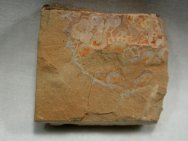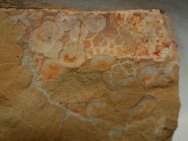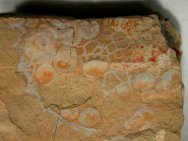Tuzoia
sinensis Phyllocarid Phylum
Arthropoda, Subphylum
Crustacea, Class Malacostraca, Subclass Phyllocarida
Geological
Time: Early Cambrian (~525 million years ago)
Size: 24
mm long by 18 mm across
Fossil
Site: Chengjiang Maotianshan Shales - Quiongzhusi Section, Yu’anshan Member, Heilinpu
Formation, Quiongzhusi Temple Hill, Kunming, Yunnan Province, China
| 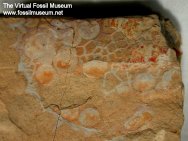 This
unusual fossil is the rarely-seen Phyllocarid known as Tuzoia sinensis
Yunnan Province, China. It is a bivalved crustacean, most well known
for its distinctive reticulated carapace. This specimen comes from
the strata immediately above the Chengjiang Boita, and is therefore
slightly younger, and more near the age of the Burgess Shale Fauna
of British Columbia. The This
unusual fossil is the rarely-seen Phyllocarid known as Tuzoia sinensis
Yunnan Province, China. It is a bivalved crustacean, most well known
for its distinctive reticulated carapace. This specimen comes from
the strata immediately above the Chengjiang Boita, and is therefore
slightly younger, and more near the age of the Burgess Shale Fauna
of British Columbia. The 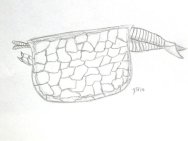 genus
is known from the Burgess Shale and from Early/Middle Cambrian deposits
of Utah. Those are largely distinguished by the presence and placement
of spines on the carapace. Few examples of the genus are known from
more than the carapace, as seen here. Notice that there are a few
circles present on the shell that are far different than the reticulation.
These are traces of brachiopods, most likely Diandongia making for
a fine association piece. Their shells were not resistant enough
to be preserved, so all we see are their outlines. genus
is known from the Burgess Shale and from Early/Middle Cambrian deposits
of Utah. Those are largely distinguished by the presence and placement
of spines on the carapace. Few examples of the genus are known from
more than the carapace, as seen here. Notice that there are a few
circles present on the shell that are far different than the reticulation.
These are traces of brachiopods, most likely Diandongia making for
a fine association piece. Their shells were not resistant enough
to be preserved, so all we see are their outlines.
Also
see: Chengjiang Biota Cambrian Explosion |
|


